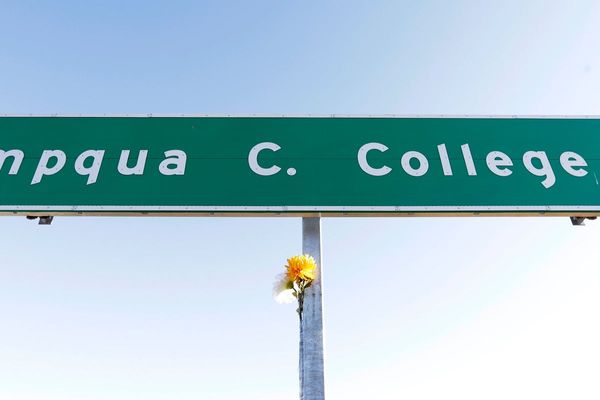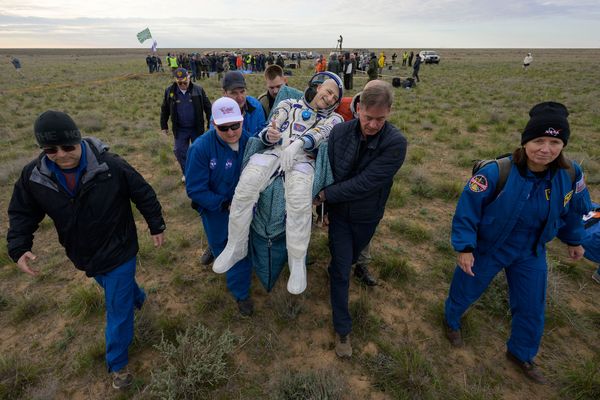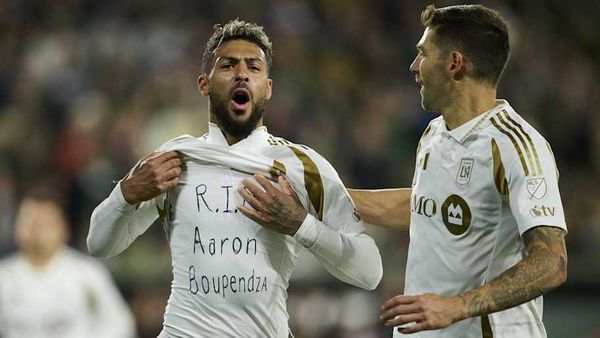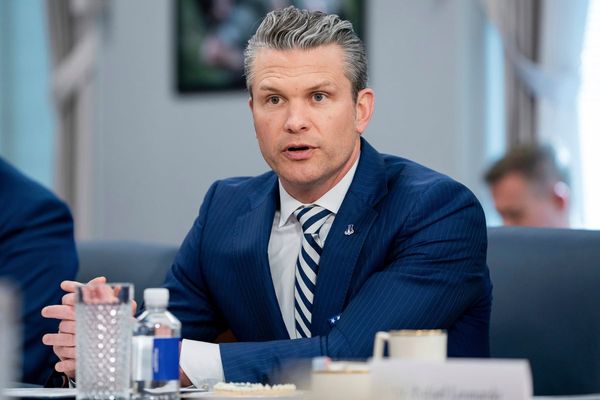ANALYSIS — It was billed as a working visit, but it might as well have been a trade summit between two of the world’s economic giants.
President Donald Trump and Indian Prime Minister Narendra Modi, during an evening news conference in the White House East Room, hailed a new “framework” that the American leader contended would “strengthen … every aspect of our partnership and friendship.”
The two leaders spoke of their personal friendship and their countries’ long history as allies over a laundry list of economic, military and geopolitical matters. “I think our relationship is the best it’s ever been,” Trump declared. Modi echoed that sentiment, saying the U.S. president had been “instrumental in nurturing U.S.-India ties and making them vibrant.”
Modi even borrowed from Trump’s “Make America Great Again” slogan, saying his government’s goal is to “Make India Great Again” with an aim to create a “developed India by 2047.” Standing a few feet away, Trump smiled widely.
Yet, a range of trade-related issues simmered below the surface.
The duo met shortly after Trump signed a memorandum ordering federal agencies to develop “a comprehensive plan for restoring fairness in U.S. trade relationships and countering non-reciprocal trading arrangements,” according to a White House fact sheet. The 47th president has long complained about America’s allies and adversaries “ripping us off.”
The import taxes announced Thursday would match individual countries’ tariffs on American-made goods; each country has its own tax level, meaning Trump’s latest round of tariffs would match those specific levels.
Trade was atop the agenda for Modi’s first White House visit during Trump’s second term. Senior administration officials said the pair also discussed defense cooperation, standing firm against China and swelling American energy exports.
The basis for increased cooperation, the senior officials said, would be the “close relationship” between Trump and Modi. The United States is India’s top trading partner, accounting for over 18 percent of its exports. But Trump wants to pare America’s $45.6 billion trade deficit with India, according to the Office of the U.S. Trade Representative.
Here are four takeaways from Modi’s White House visit:
‘Big problem’
As he often does, Trump did not mince words, letting his frustration with some Indian trade practices show.
For instance, he said the South Asian powerhouse slaps tariffs on American-made automobiles of 70 percent, which, Trump contended, makes it nearly “impossible” for U.S. automakers to sell their vehicles in such a massive potential market.
Trump criticized India’s “very strong” tariff system, calling it “a big problem.”
Modi chose another tactic, using his opening remarks at the news conference to talk up areas where his country intends to ramp up purchases of American goods and other economic moves that he said would benefit both countries.
He stated a goal to buy more U.S.-made weapons systems, and said, “We will focus on trade in oil and gas, and investment in nuclear energy will increase.”
Modi also called for closer ties to bolster supply chains for “critical minerals, advanced materials and pharmaceuticals,” as well as “lithium and rare earths.”
‘We’re charging them’
Trump twice on Thursday contended that he had planned to slap reciprocal tariffs on other countries during his first term. But he said he nixed those plans due to suffering across the globe during the COVID-19 pandemic.
Answering a reporter’s question, the “America first” president acknowledged that it often can be “very hard” to trade with India. But Trump also said that, if implemented this spring, the India piece of his one-for-one import fee proposal would work.
“We’re going to have the same. Whatever India charges, we’re charging them,” he said. “It’s a very fair way.”
About India’s high import fees, Trump called it a “different way of doing business.”
And in a surprising moment, Trump also talked up Modi’s negotiating skills: “He’s a much tougher negotiator than me, and he’s a much better negotiator than me. It’s not even a contest,” the president told a reporter.
The longtime real estate mogul and businessman might have been trying to manage expectations for coming trade talks with his counterpart.
Let’s make a deal(s)
Trump has mostly criticized America’s trading partners since returning to office. But he and his aides on made clear that India has chances to cut deals with the new U.S. administration.
To that end, the Trump administration wants to finalize a new trade pact with India before the end of the calendar year, a senior White House official said Thursday. Another bilateral deal is possible on defense, with the senior official saying that the administration wants to finalize a new framework with Modi’s government on military matters sometime this year.
On the defense framework, the two sides could come to an agreement “soon,” the official said. The need to counter China militarily and economically, according to the senior official, makes the U.S.-India alliance “one of the most critical, if not the most critical, bilateral relationship of the 21st century.”
The administration’s confidence was also rooted in what White House Press Secretary Karoline Leavitt hailed during her early briefings as Trump’s deal-making acumen.
“I would remind you, he is the master of the art of the deal. He is America’s deal-maker in chief,” Leavitt said Wednesday. “Time and time again, already, in just four weeks, we have seen the president being able to negotiate successful deals with our partners, our adversaries all around this world.”
Musk’s money
After signing the tariff memo, Trump was asked whether the meeting earlier Thursday between Modi and Elon Musk, the head of the administration’s so-called Department of Government Efficiency and the world’s richest person, had taken place in a personal or official U.S. capacity.
Trump said two things: One, he did not really know. And, two, he was sure Musk wanted to do more business in India. Remarkably, the president also said he would take the reporter’s question directly to Modi during their afternoon meetings.
At the other end of Pennsylvania Avenue a day earlier, Sen. Christopher S. Murphy made clear his views about Musk meeting with Modi.
“His agenda will not be the interests of the people of the United States of America. Elon Musk, as a representative of the White House, is going to sit down with Prime Minister Modi and talk about Tesla’s business and Elon Musk’s business in China,” the Connecticut Democrat said in a Wednesday floor speech. “You couldn’t make this up.
“He is doing press conferences in the White House, and then he is leveraging his access to power, his access to the president, his influence over American policy in order to make money for himself,” Murphy said of Musk, before asserting that DOGE staff “are not … there to try to make the government more efficient — they are in there in order to make money.”
Trump said again Thursday that if he detected a conflict of interest, he would stop Musk from taking action in his DOGE role.
Modi called his meeting with Musk at Blair House near the White House a “nice discussion.” Trump did not directly answer a question following up on whether he had asked the Indian leader about the Musk meeting.
The post Takeaways: White House visit by India’s Modi becomes mini trade summit appeared first on Roll Call.







